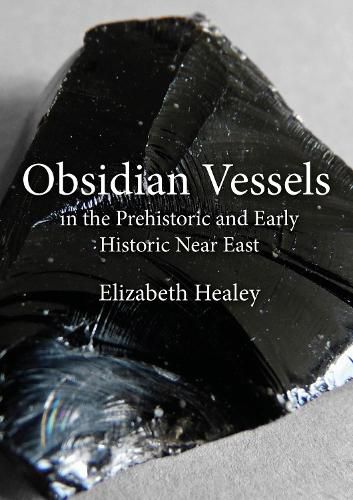Readings Newsletter
Become a Readings Member to make your shopping experience even easier.
Sign in or sign up for free!
You’re not far away from qualifying for FREE standard shipping within Australia
You’ve qualified for FREE standard shipping within Australia
The cart is loading…






Obsidian, a shiny volcanic glass, was first used to make vessels in the mid-sixth millennium BC in the Near East, although other stone had been exploited for vessel manufacture since the thirteenth millennium BC. Unlike the stone used to make the earliest vessels, which was acquired from local and regional sources, obsidian had to be obtained from volcanoes located hundreds of kilometers from where vessels were made and used. The obsidian from these sources had long been exploited for making tools and by the tenth millennium BC obsidian artifacts can be found in communities located far distant from the sources. Nevertheless, it was not until the mid-sixth millennium BC that it was used to make vessels and even then they are rare: less than 200 have been found spread over four millennia (c. 5400?1500 BC). This is perhaps in part due to obsidian's exotic origins but also because its comparative hardness and brittle nature made it difficult to work. To obtain a wider perspective on the use of obsidian for making vessels this book looks briefly at the properties of obsidian and the characteristics of the relevant sources and gives an overview of how obsidian has been understood and used by various communities around the world. The main part of the book examines the obsidian vessels found in the Near East. Previous studies have tended to take a site-specific viewpoint but here the opportunity has been taken to adopt a more holistic and integrated approach. This approach brings together different aspects of the vessels, including the provenance of the obsidian from which they were made, their morphologies, evidence for techniques of manufacture and the socioeconomic contexts in which they were produced and used, and attempts to determine whether the use of obsidian was of itself meaningful or significant. AUTHOR: Elizabeth Healey is an Honorary Research Fellow in the department of Classics, Ancient History, Archaeology and Egyptology in the University of Manchester and is one of the founders of the Manchester Obsidian Laboratory. She has had a life-long interest in lithics both in the UK and in the Near East. Her research focuses on raw materials, particularly obsidian, and the choices made by the communities that acquired them. 360 colour and b/w illustrations
$9.00 standard shipping within Australia
FREE standard shipping within Australia for orders over $100.00
Express & International shipping calculated at checkout
Obsidian, a shiny volcanic glass, was first used to make vessels in the mid-sixth millennium BC in the Near East, although other stone had been exploited for vessel manufacture since the thirteenth millennium BC. Unlike the stone used to make the earliest vessels, which was acquired from local and regional sources, obsidian had to be obtained from volcanoes located hundreds of kilometers from where vessels were made and used. The obsidian from these sources had long been exploited for making tools and by the tenth millennium BC obsidian artifacts can be found in communities located far distant from the sources. Nevertheless, it was not until the mid-sixth millennium BC that it was used to make vessels and even then they are rare: less than 200 have been found spread over four millennia (c. 5400?1500 BC). This is perhaps in part due to obsidian's exotic origins but also because its comparative hardness and brittle nature made it difficult to work. To obtain a wider perspective on the use of obsidian for making vessels this book looks briefly at the properties of obsidian and the characteristics of the relevant sources and gives an overview of how obsidian has been understood and used by various communities around the world. The main part of the book examines the obsidian vessels found in the Near East. Previous studies have tended to take a site-specific viewpoint but here the opportunity has been taken to adopt a more holistic and integrated approach. This approach brings together different aspects of the vessels, including the provenance of the obsidian from which they were made, their morphologies, evidence for techniques of manufacture and the socioeconomic contexts in which they were produced and used, and attempts to determine whether the use of obsidian was of itself meaningful or significant. AUTHOR: Elizabeth Healey is an Honorary Research Fellow in the department of Classics, Ancient History, Archaeology and Egyptology in the University of Manchester and is one of the founders of the Manchester Obsidian Laboratory. She has had a life-long interest in lithics both in the UK and in the Near East. Her research focuses on raw materials, particularly obsidian, and the choices made by the communities that acquired them. 360 colour and b/w illustrations